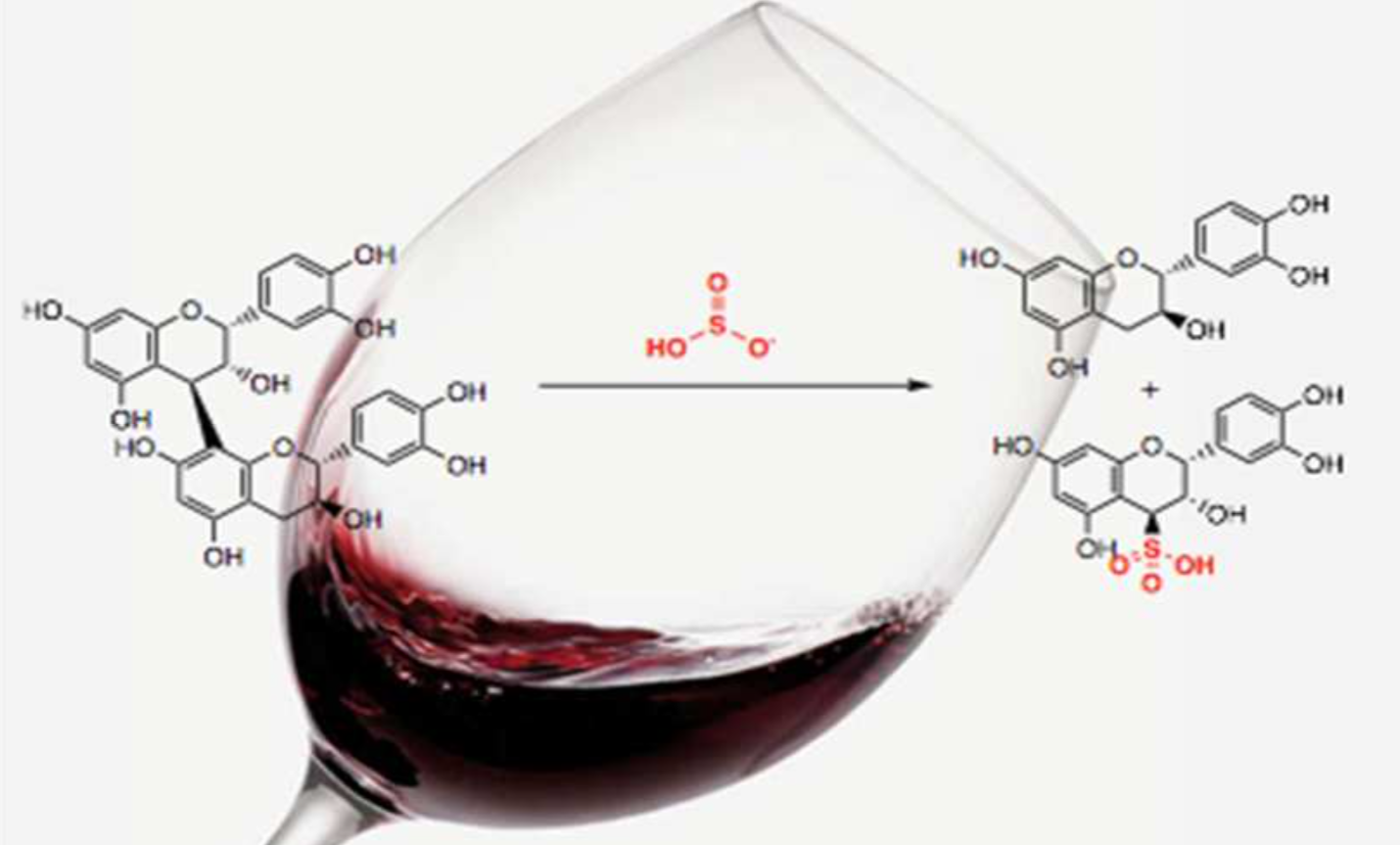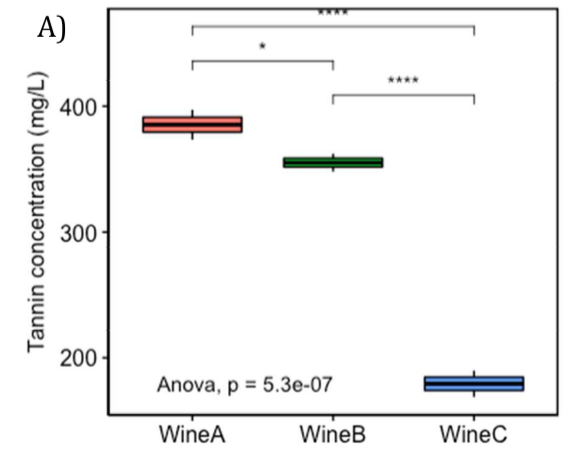Unlike human skin or electronic gadgets, aging makes red wine better. The reasons are complex, but they all boil down to chemistry.
One of the benefits of aging is a reduction in astringency. Astringency is what makes your cheeks pucker slightly as you sip a glass of Merlot, and tannins -- which are found in grape skins and seeds -- are thought to be responsible. One cause of astringency is when tannin molecules bind together, a process known as polymerization.
Young wines are chock-full of polymerized tannins, and wine connoisseurs are not impressed. These wines taste harsh, but aged wines are described as smooth. Chemically, the tannins are no longer as polymerized. In other words, the individual tannin molecules no longer bind together.
Previous research suggested that this occurs because of a chemical called bisulfite (HSO3-) that is added during the winemaking process as a preservative. Presumably, bisulfite ions attack the polymerized tannins, breaking them apart and creating a byproduct, a sulfonated tannin. (See figure. The molecule on the left represents a polymerized tannin, while the molecules on the right represent the breakdown products following reaction with bisulfite.)

In research recently published in the Journal of Agricultural and Food Chemistry, a team led by Lingjun Ma and Andrew Waterhouse of the University of California-Davis examined this phenomenon by analyzing the tannin profile of three wines that were produced using different amounts of bisulfite.
 As expected, the wine with the greatest amount of bisulfite had the least polymerized tannin. In the wine with the least bisulfite, the average number of tannin molecules in a polymer was more than 2.8; in the wine with the greatest amount of bisulfite, the average dropped to under 2.6.
As expected, the wine with the greatest amount of bisulfite had the least polymerized tannin. In the wine with the least bisulfite, the average number of tannin molecules in a polymer was more than 2.8; in the wine with the greatest amount of bisulfite, the average dropped to under 2.6.
Perhaps more importantly, the number of tannins overall decreased dramatically as bisulfite increased. In the wine with the least bisulfite (Wine A), tannins were present at a concentration of nearly 400 mg/L; in the wine with the most bisulfite (Wine C), the tannin level fell by half. (See figure.)
Indeed, wine improves with age. And aging is improved with a little wine.
Source: Lingjun Ma, Aude A. Watrelot, Bennett Addison, and Andrew L. Waterhouse. "Condensed Tannin Reacts with SO2 during Wine Aging, Yielding Flavan-3-ol Sulfonates." J. Agric. Food Chem.66 (35): 9259-9268. Published: May 24, 2018. DOI: 10.1021/acs.jafc.8b01996




